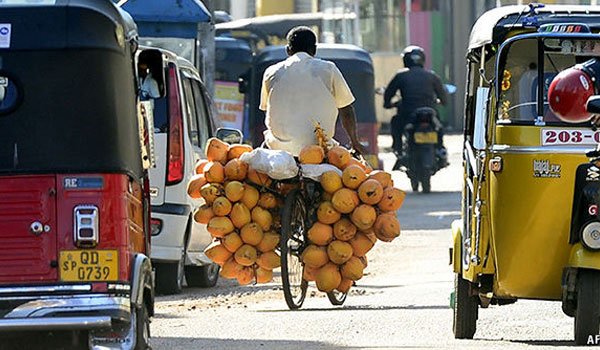If so much is so rosy, why is Sri Lanka going cap in hand to the IMF? The immediate concern is the capital flight that has buffeted emerging markets around the world. Although Sri Lanka’s current-account deficit had been declining steadily over the past few years, the country suffered big capital outflows last year as foreign investors sold down their holdings of government bonds.
The central bank fought against the tide for a while, using up some $2 billion, or more than a fifth, of its foreign-exchange reserves to defend the rupee. After it relented in September, the currency fell to a record low against the dollar and has since weakened further. To hear it from Ravi Karunanayake, Sri Lanka’s finance minister, the country is a victim of the woes that have beset other emerging markets: “If China devalues and India devalues, little Sri Lanka gets caught in between.”
Yet the main source of Sri Lanka’s fragility is its own fiscal mistakes, not external turbulence. A combination of cumbersome debts and a rickety tax system has made it vulnerable to the withdrawal of foreign funding. At nearly three-quarters of GDP, its public debt is large for a developing country. It does not help that a chunk of that debt was borrowed from China under the previous president, Mahinda Rajapaksa, to pay for infrastructure built by Chinese firms, including several expensive but pointless vanity projects. The principal on these loans will not fall due until the early 2020s, but the interest on them is high, adding to Sri Lanka’s already weighty debt-servicing costs.
That points to what many in Colombo see as the root cause of their headache: a threadbare tax system. Revenues amount to a paltry 13% of GDP. Countries with similar levels of income typically take in 20%. The new administration, in power for just over a year, has made things messier. It slashed corporate and income taxes, introducing flat rates of 15%, hoping to lure investors to Sri Lanka. To make up for some of the shortfall, it has relied largely on one-off measures such as an extra levy on a few dozen highly profitable companies. Anushka Wijesinha, chief economist of the Ceylon Chamber of Commerce, says businesses are not asking for tax breaks but rather for a more predictable tax regime.
The government has also driven up its costs by awarding public servants a big pay rise to make good on an election promise. It had initially aimed to keep the fiscal deficit to 4.4% of GDP last year. Instead it hit 7.2%. Even so, calling on the IMF does not mean that Sri Lanka faces a crisis. Arjuna Mahendran, the governor of the central bank, is careful to point out that Sri Lanka has not missed a debt payment in years and is not about to do so. Instead, the government views the IMF loan as a buffer, which it thinks will help it gain credibility with foreign investors.
Bringing in the IMF is not cost-free, however. It will want to see the government strengthen its fiscal system. That may be the point: a stern external force should help catalyse fiscal reforms. It could also pave the way for an additional loan from the World Bank.
Sri Lanka still has much going for it. It is working to position itself as a trading hub for South Asia. Sitting about midway on shipping lanes between Singapore and Dubai, it offers deepwater ports, easy access to India and some of South Asia’s best highways. Sorting out the infrastructure of its tax system is far less glamorous but just as critical.
(economist.com)






